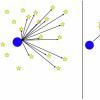The breakout by age in the post does not tell the full story, however. Going back to the source, we find that the 37 deaths among vaccinated <50s were among 62403 cases → 0.06% cmr. The 99 deaths among unvaccinated <50s were among 212989 cases → 0.05% cmr. So among the <50s, the vaccine did not protect from death, and may have enhanced death a little.
In the vaccinated >50s, the 1054 deaths were among 51420 cases → 2.0% cmr. The unvaccinated 437 deaths were among 6724 cases → 6.5% cmr. So, among the >50s, the vaccine did actually protect from death (phew!).
I believe your figures and analysis are mathematically correct, but there may be a good explanation for why there appears to be percentage-wise more COVID deaths in the under 50s vaccinated group: this article looks at similar Public Heath England data, and comments that:
A particular statistic that caused consternation in some parts was the fact that the mortality rate in the vaccinated group (68 deaths) was higher than in the unvaccinated (38 deaths) in the over 50s. Although this sounds concerning, it is likely to be an artefact: those at risk of dying are the ones who have been vaccinated.
In other words, most of the under 50s would rightly not be so concerned with the possibility of death from COVID, since death is a relatively low risk in at age group. So many under 50s may not bother to get a vaccine. However, those under 50s with underlying health issues which make them more vulnerable to COVID death will tend to be the ones who, sensibly, elect to get vaccinated. And this may explain why there are percentage-wise more COVID deaths in the vaccinated under 50s, because the vaccinated will tend to be the people with underlying health issues.
Edited by Hip, 15 September 2021 - 04:28 AM.
































































